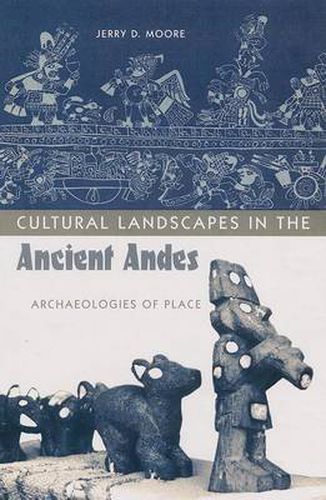Readings Newsletter
Become a Readings Member to make your shopping experience even easier.
Sign in or sign up for free!
You’re not far away from qualifying for FREE standard shipping within Australia
You’ve qualified for FREE standard shipping within Australia
The cart is loading…






The ancient civilizations of the South American Andes created some of the most spectacular monuments and buildings in the Western Hemispere, and these edifices had a wide range of impacts on the cultures they served. Jerry Moore examines archaeological and ethnohistorical data with an innovative lens and discovers what the architecture of the Moche, Chimu, and Inca reveals about the roles of authority, conflict, and ritual in the cultural identities of these societies. Arguing that the culturally constructed environment is always the expression of multiple decision domains, Moore outlines a series of domains linking architecture and human experience. He then provides an analysis of sound and space and an examination of ceremonial architecture and the nature of religious authority, and he explores the design logics and technologies of displays in ritual processions. He also discusses
house societies
as conceived by Levi-Strauss and argues for the emergence of house societies on the north coast of Peru after 800 CE. Throughout, Moore emphasizes the diverse and recursive relationship between people and place, underscoring the necessity for archaeology that is sensitive to the ancient experience of place.
$9.00 standard shipping within Australia
FREE standard shipping within Australia for orders over $100.00
Express & International shipping calculated at checkout
The ancient civilizations of the South American Andes created some of the most spectacular monuments and buildings in the Western Hemispere, and these edifices had a wide range of impacts on the cultures they served. Jerry Moore examines archaeological and ethnohistorical data with an innovative lens and discovers what the architecture of the Moche, Chimu, and Inca reveals about the roles of authority, conflict, and ritual in the cultural identities of these societies. Arguing that the culturally constructed environment is always the expression of multiple decision domains, Moore outlines a series of domains linking architecture and human experience. He then provides an analysis of sound and space and an examination of ceremonial architecture and the nature of religious authority, and he explores the design logics and technologies of displays in ritual processions. He also discusses
house societies
as conceived by Levi-Strauss and argues for the emergence of house societies on the north coast of Peru after 800 CE. Throughout, Moore emphasizes the diverse and recursive relationship between people and place, underscoring the necessity for archaeology that is sensitive to the ancient experience of place.